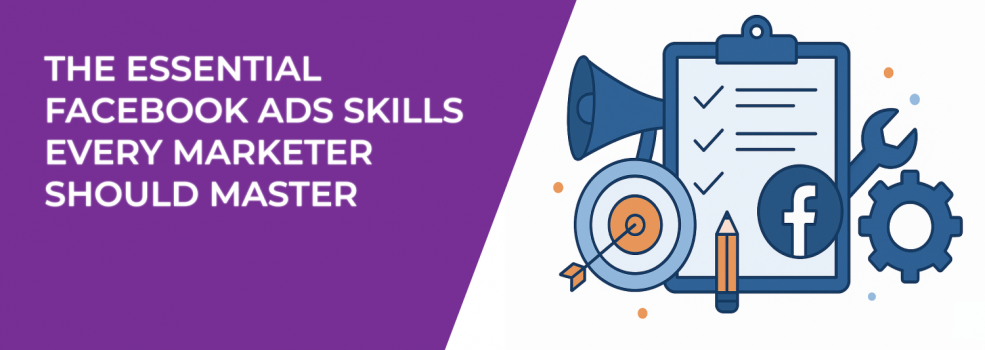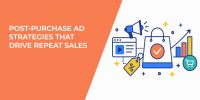Facebook Ads can seem easy from the outside. Set a goal, upload some visuals, and let the algorithm go to work. But if you’ve ever run ads before, you know it’s rarely that smooth.
You need sharp skills — the kind that go beyond the basics and help you optimize every part of a campaign. Whether you're scaling a brand or managing client accounts, these are the skills that separate solid marketers from truly profitable ones.
Let’s break them down.
1. Mastering Audience Targeting
Facebook’s real power lies in its targeting capabilities — but many marketers only scratch the surface.
Here’s how to go deeper:
Core, Custom, and Lookalike Audiences
-
Core Audiences use Facebook’s native data — like location, age, interests, and behaviors. These are great for reaching new people, but only when combined with intent.
-
Custom Audiences let you reach users based on specific actions — visiting your site, viewing videos, opening lead forms, or being part of your email list.
-
Lookalike Audiences help you scale by reaching new people similar to your best existing customers. But they only work well when based on high-quality source data.
Example: Create a 1% Lookalike Audience from your highest-value customers (those who’ve spent over $500). Then compare that to a Lookalike from general site traffic. You'll likely see much higher conversion rates from the first group.
Smart Use of Layering and Exclusions
Layer interests and demographics to zero in on quality. But don’t over-target — that kills scale. Use exclusions to avoid overlaps and make sure different ad sets aren’t bidding against each other.
Behavioral Retargeting
Retargeting doesn’t just mean “everyone who visited the site.” Segment by action:
-
Show a product demo to users who watched 50% of your intro video.
-
Offer a discount to users who added to cart but didn’t check out.
-
Share a case study with leads who downloaded your guide.
Want a more complete view? Explore Facebook Ad Targeting 101 to learn how to mix intent, reach, and relevance without overcomplicating your campaigns.
2. Understanding Facebook’s Ad Auction & Delivery System
When ad performance drops, it’s often about how Meta is delivering — not just the creative.
Know your bidding strategy:
-
Spend-Based
-
Highest Volume: Maximize conversions without worrying about cost per action.
-
Highest Value: Focus on purchases with higher value — works best if your pixel is sending back accurate revenue data.
-
-
Goal-Based
-
Cost Cap: Set a target average cost per result. Ideal when you want predictable costs.
-
ROAS Goal: Set a target return (e.g., 2.0x) — Meta will aim to hit that while spending your budget.
-
-
Manual (Bid Cap)
-
Set a max bid in auctions. Gives you control, but risks under-delivery if your bids are too low.
-
Example:If you’re testing creatives, start with Highest Volume. Once performance is proven, switch to Cost Cap or ROAS Goal for efficiency and scale.
Want more detail? See Meta Bidding Strategies Explained.
Auction Competition and Seasonality
Costs rise when other advertisers target the same users. Around Black Friday, for instance, CPMs spike — which means your ads need to be even more relevant to stay competitive.
Ad Relevance and Estimated Action Rate
Even with a solid budget, your ad might lose in the auction if it has low engagement or poor quality. Watch for flags like “Learning Limited” or “Ad Set May Get Zero Impressions” in your diagnostics.
That warning? You can unpack it in detail in this article — and avoid wasting budget.
3. Writing and Designing High-Impact Creatives
Creative is the most controllable (and most ignored) part of performance.
Strong ads follow a few clear principles:
Headlines That Highlight Benefits
Your headline should answer: “Why should someone care?”
-
Weak: “Our new feature is live!”
-
Stronger: “Cut your meeting time in half — here’s how.”
Visuals That Look Native to the Feed
Avoid polished, generic imagery. Use visuals that look like content people already engage with — product demos, real faces, bold text overlays.
Example: Test a UGC-style selfie video against a traditional studio ad. The former might feel more authentic and drive higher engagement in Stories or Reels.
Funnel-Aligned Messaging
Early-stage users need education or inspiration — not a sales push.
Later-stage users respond to urgency, social proof, and clarity.
Placement Optimization
Design for mobile first. Use vertical video for Stories, square for Feed, and ensure your CTA is visible. Your message should also work with or without sound.
Don’t just build one ad and hope for the best. Creative variety is what keeps performance steady over time.
4. Running Smart, Structured Tests
Testing isn’t just something you do at the beginning of a campaign — it’s a constant process of learning and optimizing.
Here’s how to run tests that actually teach you something:
Change One Thing at a Time
Isolating variables lets you know what caused the result. Change the headline, keep everything else the same. Repeat for visuals, CTA, or offer.
Start With Big Swings
Skip the small font tweaks early on. Test different hooks, formats, or value props. That’s where you’ll find the biggest wins.
Example: Compare two different concepts:
-
Concept A: “Struggling to stay organized?” (pain-focused).
-
Concept B: “Stay 100% focused with this simple tool” (benefit-focused).
Be Careful With Advantage Campaign Budget
Advantage Campaign Budget (formerly CBO) gives Meta full control over how budget is allocated between ad sets. That’s great for scaling proven ads — but for testing, it can skew results by pushing all budget to one ad set too early.
Use individual ad set budgets during testing to ensure each version gets a fair shot.
Use Automated Rules to Kill Losers Fast
Set rules to pause ads with high cost per result after a set spend — for example, $20 or $30. This protects your budget and keeps your test clean.
5. Reading and Reacting to Metrics That Matter
Clicks don’t equal conversions. You need to know which metrics are actually tied to revenue — and how to adjust when they shift.
Here’s what to watch:
-
Cost per action at each funnel stage — Monitor how much you’re paying for clicks, leads, add-to-carts, and purchases. High early-funnel costs might suggest poor targeting or creative.
-
Performance by placement and device — Break down performance by ad placement and device. A campaign may perform well overall but burn budget on one underperforming placement.
-
Ad frequency — When the same person sees your ad three or more times, fatigue sets in. Refresh creative or rotate your audience.
-
Post-click behavior — Use tools like Google Analytics or Hotjar to see if users are actually engaging after they click. High bounce rates? That’s a red flag for your landing page.
-
Actual sales vs. pixel events — Don’t rely on Meta’s pixel data alone. Sync campaign results with your CRM or Shopify to confirm actual revenue and customer value.
Want to align metrics to your campaign objective? Check out Meta Ad Campaign Objectives Explained — it’ll help you measure what really matters.
6. Adapting to Changes in the Platform
Facebook’s ad environment changes constantly — and if you’re not adapting, you’re falling behind.
To stay ahead, make sure you:
-
Track platform updates regularly — Follow Meta’s business blog or ad community forums. New formats, privacy rules, and features are released all the time.
-
Review your attribution settings — A 7-day click window works well for most purchases, but high-ticket sales might need a longer window. Adjust based on your product and sales cycle.
-
Use external tools to build better audiences — Go beyond Meta’s built-in targeting with platforms like LeadEnforce. They let you build Custom Audiences using external data or web behavior — which leads to better reach and higher conversion rates.
-
Focus on sustainable systems, not hacks — Creative refresh cycles, structured testing, and consistent reporting will outperform short-term tricks every time.
-
Think beyond one channel — Don’t build your whole acquisition strategy on Meta. Repurpose creatives across TikTok, YouTube, or even email. Diversification is protection.
Wrapping Up: These Skills Are the Real Growth Levers
Facebook Ads aren’t “set and forget.” They’re a moving target. But with the right skills, you’ll know what to tweak, how to test, and when to scale.
Focus on one skill at a time. Learn to read the data, then tighten your targeting. Refresh your creative, then test smarter. Each improvement compounds.
In the long run, that’s how profitable advertisers win.

